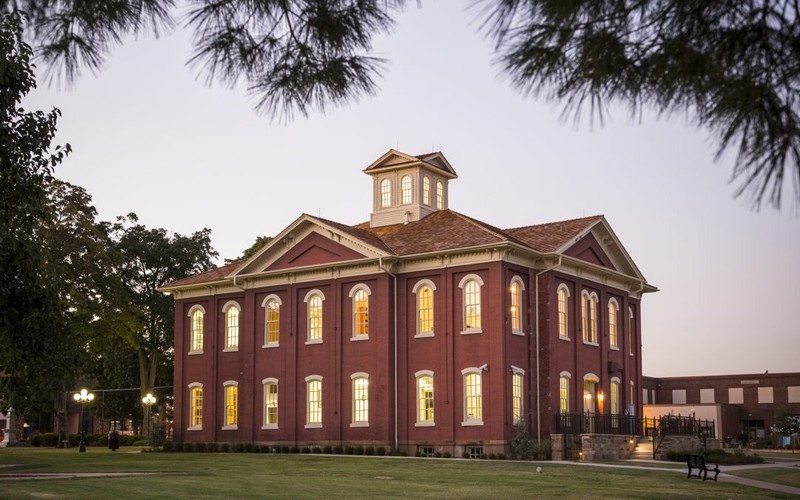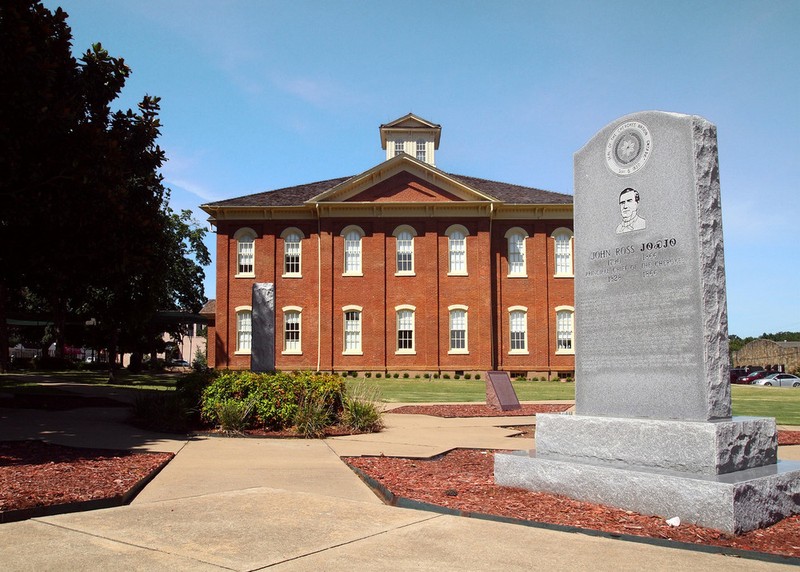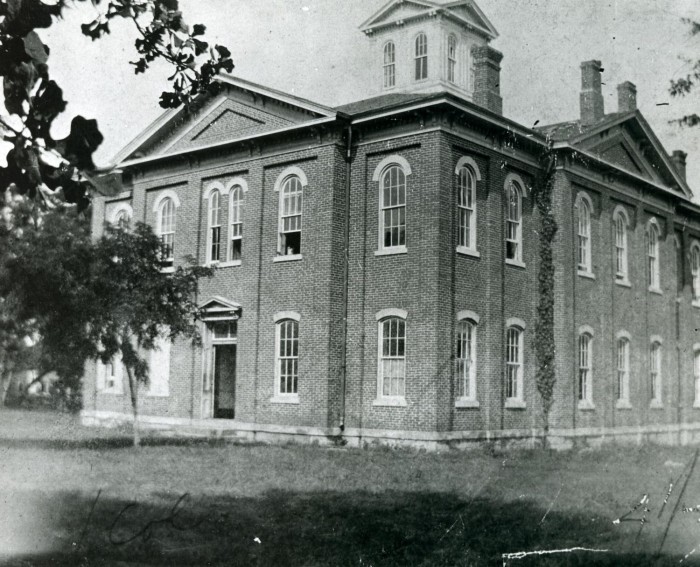Cherokee National Museum - Formerly Cherokee National Capitol Building
Introduction
Author-Uploaded Audio
Audio by Holley Snaith
Text-to-speech Audio
Images
The Cherokee National History Building, Built in 1869

Monument to the Cherokee Chief John Ross in Front of the Museum

The Cherokee National Capitol Shortly Before Oklahoma Became a State, ca. 1907

Exhibits in the Cherokee National History Museum
.jpg)
Backstory and Context
Author-Uploaded Audio
Audio by Holley Snaith
Text-to-speech Audio
After the Cherokee Indians were forced West during the Trail of Tears, they established their new government in Tahlequah, Oklahoma. In September of 1839, the Cherokee Nation adopted their new constitution here. Originally, all that was on the land were log structures, but they were burned during the Civil War by the leader of the Cherokee Nation, Stand Watie. Work on the Italianate style capitol building began in 1867 and was completed in 1869. For nearly forty years, it served as offices for the Cherokee Nation's executive, judicial, and legislative branches. In 1907, Oklahoma was admitted as a state. As a result, the Cherokee tribe relinquished control of the Cherokee National Capitol Building.
Once the building was in the hands of the county, the United Daughters of the Confederacy placed two monuments honoring those who fought for the Confederacy during the Civil War, including one in remembrance of General Stand Watie, who was also a Confederate general, in the square in front of the Capitol Building. In total, more than ten monuments that had no correlation to Cherokee history were placed there. Finally, in 2020, two of the Confederate monuments were removed. After decades of being used by Cherokee County as a courthouse, the historic structure was returned to the Cherokee Nation in the late 1970s and it served as the home for the judicial branch.
By the early 2000s, the iconic Cherokee National Capitol Building was in a state of disrepair. After nearly 150 years of standing tall, it was badly in need of a renovation project. Finally, it underwent a few massive projects to restore it to its original 1800s appearance, such as the creation of a replica cupola and replacing and repainting more than 2,000 bricks. In order for the major renovations to be completed, the judicial offices of the Cherokee Nation were moved to a new building completed in 2017. At the time, the Cherokee Nation Businesses Cultural Tourism office announced that their most iconic building would soon become a museum.
In 2019, the Cherokee National Capitol Building reopened as the Cherokee National History Museum. This monumental moment in Cherokee history honored the wishes of the late Shorey Ross, a descendant of the famed Cherokee chief John Ross, who wrote in the early 1900s that he wished for the Capitol Building to one day be a museum and show the "steady and upward progress of the Cherokees." The museum possesses 4,000 square feet of permanent exhibits that explains the history and lifestyle of the Cherokee from pre-European contact to the revitalization of the tribe. There is also an additional 1,000 square feet that play host to rotating exhibits covering various themes such as: commerce, education, religion, government, and more. Visitors have the opportunity to view artifacts on loan from institutions such as the Smithsonian, Oklahoma Historical Society, and the Cherokee National Archives. The Cherokee National History Museum eloquently tells the painful and inspiring story of the largest tribe in the United States in one of the most pivotal buildings in the tribe's history.
Sources
Beth Harrington, "Tahlequah," The Encyclopedia of Oklahoma History and Culture, http://www.okhistory.org/publications/enc/entry.php?entry=TA002 (accessed November 27, 2017).
Times Record Staff. Cherokee National History Museum Opens, Times Record. August 11th 2019. Accessed September 20th 2020. https://www.swtimes.com/news/20190811/cherokee-national-history-museum-opens.
Berry, Christina. Cherokee Nation Capitol Building, All Things Cherokee. July 4th 2014. Accessed September 20th 2020. https://www.allthingscherokee.com/cherokee-nation-capitol-building/.
Staff Reports. Renovations on Cherokee National Capitol begins, Cherokee Phoenix. May 4th 2018. Accessed September 20th 2020. https://www.cherokeephoenix.org/Article/index/32229.
Crawford, Grant D. Cherokee Nation's removal of monuments from historic Capitol Square stirs controversy, June 14th 2020. Accessed September 21st 2020. https://www.tahlequahdailypress.com/news/cherokee-nations-removal-of-monuments-from-historic-capitol-square-stirs-controversy/article_38302242-aa8c-5abe-8f30-11801f9f2f26.html.
Crawford, Grant D. Cherokee judicial offices move to tribal complex, Tahlequah Daily Press. February 23rd 2018. Accessed September 21st 2020. https://www.tahlequahdailypress.com/news/local_news/cherokee-judicial-offices-move-to-tribal-complex/article_70532daf-4a85-57ba-8071-fc142510ce09.html.
Chavez, Will. Capitol’s renovation into history museum nearly finished, Cherokee Phoenix. March 8th 2019. Accessed September 21st 2020. https://www.cherokeephoenix.org/Article/index/73040.
Crawford, Grant D. CAPITOL PROJECT New Cherokee National History Museum is now open, Tahlequah Daily Press. August 9th 2019. Accessed September 21st 2020. https://www.tahlequahdailypress.com/news/new-cherokee-national-history-museum-is-now-open/article_c96834f7-9cc6-5d5a-8d5b-7c82c3ea28db.html
1 Architecture
1 Architecture
The Gateway to Oklahoma History
Cherokee Phoenix
